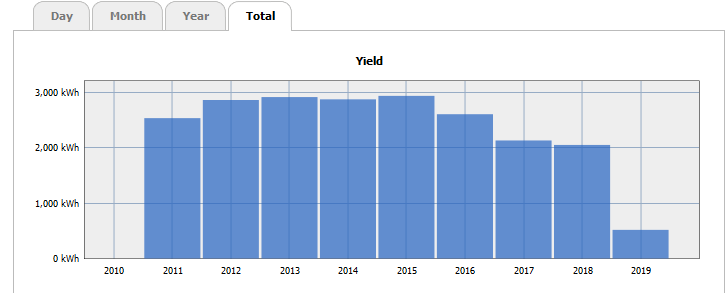Guest Post: Active Investing Versus Passive Investing
Today I have a guest post for you by my fellow money blogger Simon from Financial Expert.
In his post, Simon examines the pros and cons of investing in active versus passive funds. This is (of course) a subject of much debate among both pundits and investors. I will share a few thoughts of my own about it at the end.
Over to Simon, then…
For people who are enjoying their retirement or approaching it, choosing the right investments is clearly crucial.
With less time to correct mistakes, a bad investment choice is likely to have a major impact on quality of life in retirement. Many older people therefore struggle to make decisions given the number of investment choices available.
But before picking any particular trust or fund, all investors must first navigate a fork in the road. They must decide whether to follow an active or passive investment strategy.
Table of Contents
Active Versus Passive
A fund manager following an active strategy has the discretion to hand-pick shares that they believe represent a superior investment opportunity. They do so in an attempt to deliver a return higher than the market average – for example, the return on the FTSE 100 index of large companies listed on the London Stock Exchange.
Funds that follow a passive strategy, on the other hand, use a mechanical approach of buying most of the shares which form indexes such as the FTSE 100. The objective of replicating the index is to provide a return which mirrors it as closely as possible.
Of these two approaches, which is the more successful? There are many arguments on each side of the debate. Below, I pull out the key pros and cons to help you decide.
In Support of Active Investing
Detailed research is valuable in opaque markets
In emerging markets and other less developed economies, quality financial information is a scarce resource. For example, emerging-market companies are less covered by investment analysts, and the quality of their financial reporting may be lower.
This creates a research deficiency which can be exploited by any active fund with a research team. Any insights generated by the boffins can be used to guide trades and improve the performance of the fund.
This is one of the key reasons why investors opt for active funds over passive funds in the emerging market equities asset class.
Moreover, the higher returns of high-risk markets such as emerging markets helps to cover the premium fees charged by active funds.
Absolute return strategies
Active funds are free to engage in investment strategies which seek to provide a positive absolute return regardless of whether the market is rising or falling.
They can do so by either short selling a company, by switching between asset classes, or by investing for relative value. Relative value investing is where fund managers seek out under-priced securities. They buy under-priced securities and sell over-priced peers. In theory this strategy will deliver a profit regardless of the overall direction of the market, as long as the pricing anomaly corrects itself over time.
These funds seek to provide a lower level of volatility compared to an ordinary equity investment, and similar returns over the long term.
However, the recent performance of large absolute return funds has been underwhelming. In the three years to the end of November 2018, the flagship absolute return fund managed by Standard Aberdeen’s has returned only -6.6% compared to 42% for an average investment trust.
In fact, only 12 of 102 similar funds reported a positive return over the same period. This implies that while active strategies might work on paper, they are difficult to execute in practice, particularly when so much money is chasing the same strategy.
The Drawback of Active Investing
Active managers are losers… most of the time
The track record of active funds highlights their biggest drawback: after fees, active funds tend to under-perform the market average.
The Financial Times reported in 2015 that ‘Nine out of ten active funds fail to beat their benchmark.‘
Fund managers and research staff are expensive. This translates into higher annual ongoing charges. The higher the fees, the higher the bar is lifted on the returns needed to meet investor expectations.
Simple logic can provide a hint at why active funds disappoint:
- Worldwide, the lion’s share of assets are still owned by active funds.
- By definition, only half of the market participants can perform ‘better than the average’.
- Of the winning half, some of these winners will have significantly outperformed, while many will have only incrementally outperformed.
- Because of the premium fees they charge, any active fund that beats the benchmark only slightly will still come out as a loser after fees are taken into account.
- Therefore we can conclude that theoretically, only a small proportion of fund managers (those that beat the benchmark by a good margin) can deliver the return that investors expect.
The second issue that plagues active managers is the difficulty of repeating the performance in subsequent years.
A fund manager may have enjoyed a particularly strong year because of sheer luck alone. Perhaps the fund happened to simply be in the right asset at the right time. This doesn’t guarantee that the fund will enjoy remarkable success in the future.
The temporary and unrepeatable nature of fund success explains why the fraction of fund managers that fail to meet their benchmark rises to the ‘Nine out of Ten’ statistic reported by the Financial Times when their performance is measured over a long time frame.
In Support of Passive Investing
Passive strategies deliver what they promise
Followers of passive investment strategies understand this logic and are prepared to accept an ‘average’ market return, in exchange for the assurance that they will not under-perform it.
Passive funds, which create portfolios which closely resemble the indexes they track, carry much lower fees as no research analysts or star fund managers are needed on the payroll.
With fees as low as 0.06%*, trackers give investors the best chance to achieve as close to the ‘average market return’ as possible. As stated above, this will beat active funds, which typically trail behind the same benchmark.
* Vanguard FTSE 100 Index Trust
The Drawback of Passive Investing
An unhealthy concentration
Indexes are created mechanically by companies such as FTSE and Standard & Poor’s. Each company in the index is weighted by its size, among other factors.
This formulaic approach has the unintended side effect of creating unhealthy levels of concentration.
Vanguard’s Emerging Market Stock fund is a good example. 31% of the fund value is invested in a single country; China. In contrast; India, Brazil and Russia take up just 8%, 8% and 4% of the fund respectively.
Indexes can also be skewed by industry. Financial companies form 24% of the same fund. This vastly outstrips banking’s share of the global economy. Even in the UK, which of course contains London, a global financial capital, banking and finance only contribute 6.9% of economic output.
The result of these distortions is that ‘diversified’ passive investors can find themselves exposed to country-specific, sector-specific or even company-specific risks. They may have no clue that such a large proportion of their portfolio is invested in such specific areas, given the global nature of the fund.
Therefore, while passive funds appear to give retirees the best opportunity to achieve average market returns over the long term, investors should be wary. Any potential index fund should be reviewed to discover whether they have an unintended concentration in a particular region or sector.
About the Author: Simon writes for Financial-Expert.co.uk, an investing website with an educational focus. Recent posts include How to Invest in Property and How to Invest in Shares.
Many thanks to Simon for an illuminating article on an important topic for all investors.
Anyone who is considering investing in funds or trusts needs to bear in mind the distinction between passive and active management . For new investors, low-cost passive tracker funds, such as those run by Vanguard and mentioned by Simon above, could certainly be worth considering. But bear in mind the point Simon raises about the risk of unintentionally creating unhealthy levels of concentration in a single country, sector or even company.
Personally I have some money in tracker funds, but quite a lot more in funds that are actively managed. This is partly due to the fact that having no living dependants I can afford to take a slightly more adventurous approach in pursuit of better returns. Nonetheless, I do of course aim to diversify my investments as widely as possible, so that a downturn in one particular market or sector doesn’t impact too badly on the value of my overall portfolio.
I would also comment that most investment funds and trusts incorporate quite a bit of diversification already due to the range of investments they hold. Although they do of course come with a degree of risk, other things being equal this is likely to be a lot less than investing in individual company shares. And for older investors, careful risk management is key to ensuring a comfortable retirement, no matter how long this may prove to be 🙂
As always, if you have any comments or questions on this article, for me or for Simon, please do post them below.
Disclaimer: Nothing in this article should be construed as individual financial advice. All investments carry a risk of loss. Be sure to do your own ‘due diligence’ before making any investment and consult a qualified independent financial adviser if in any doubt how best to proceed.























